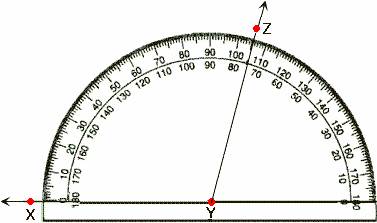

The distance from A to D will be greater than 11 inches. 4l Jll, Birkhoff stated his protractor postulate in terms of Restate it using radian measure degree measure. The segment addition postulate does not apply to this situation. In this example, points B and C do not sit directly in a straight line from A to D. We join the segments together and add the two original lengths to get the length of the new segment. One rule to using the segment addition postulate is that the new segment you form by combining the original two segments must be perfectly straight and no gaps or overlapping of segments are allowed. To calculate the length of AD, we add both of the original lengths to get the new length, 11 inches. In order to do this, we connect points B and C and create a new segment called AD. One method is when we need to combine two segments together. Let's look at a few different ways we can use the segment addition postulate. We use segments and we also use "angles", which will be explained in a seperate lesson. It is part of the exclusive content in my foldable bundle. After that, I had went through this sheet with my students. The Angle Addition Postulate has examples for students to practice using the theorem. This is one of two ways to make measurements in Geometry. The other flaps also have students write the definitions of acute, right, obtuse, and straight angles. In the real-world we use this postulate to make measurements of objects. This is called the Segment Addition Postulate in Geometry. Three panels of the fencing will cover 24 feet.įour panels would cover 32 ft, five panels will cover 40 feet, and so on. Since each section of the fence is 8 feet long, and if we only consider the three main sections of fencing in the photo, then the entire fence would be 8ft + 8ft + 8ft = 24 feet. Add the two lengths together to get the length of the whole object. That's exactly what the segment addition postulate tells you to do. For every angle \ab, the measure of \ab is a real number in the closed interval 0 180 determined by \ab. You knew that the whole length is the sum of the two lenths. Postulate 7 (The Angle Measure Postulate). Since the triangle is 3 inches long, and the square is 4 inches long, the entire length from the left side to the right side would be 7 inches long.Ĭongratulations! You just used the Segment Addition Postulate to get your answer. Using the example below, calculate the length of the object. All objects with lengths that can be measured are called segments.

This lesson defines the technique and concepts associated with measuring objects.Īny object with length greater than zero is called a segment. We need to measure objects in real-life all the time.
Protractor postulate how to#
If you know how to measure with a ruler or tape measure, then you already know the Segment Addition Postulate! We will formally define it in this lesson in Geometry terms, but it's all the same. The diagonals bisect each other.The segment addition postulate is a rule that tells us how we should measure the lengths or heights of certain objects. When done pick up handout & peer edit hw.Draw a labeled diagram then find x and mConstruct the perpendicular bisector of AC. Using more algebra If B is between A and C, find the value of x and the measure of BC AB = x2 + 20 BC = 3 - x AC = 17

Try it! If B is between A and C, find the value of x and the measure of BC AB = 3(x + 7) BC = 2(x – 3) AC = 50


 0 kommentar(er)
0 kommentar(er)
